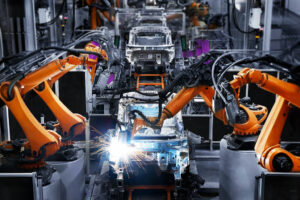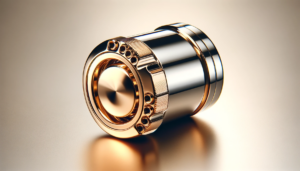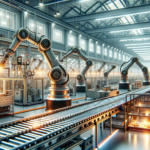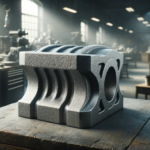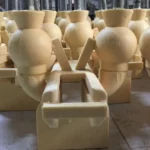Language:

Lost Wax Casting and Forging: The Ultimate Comparison
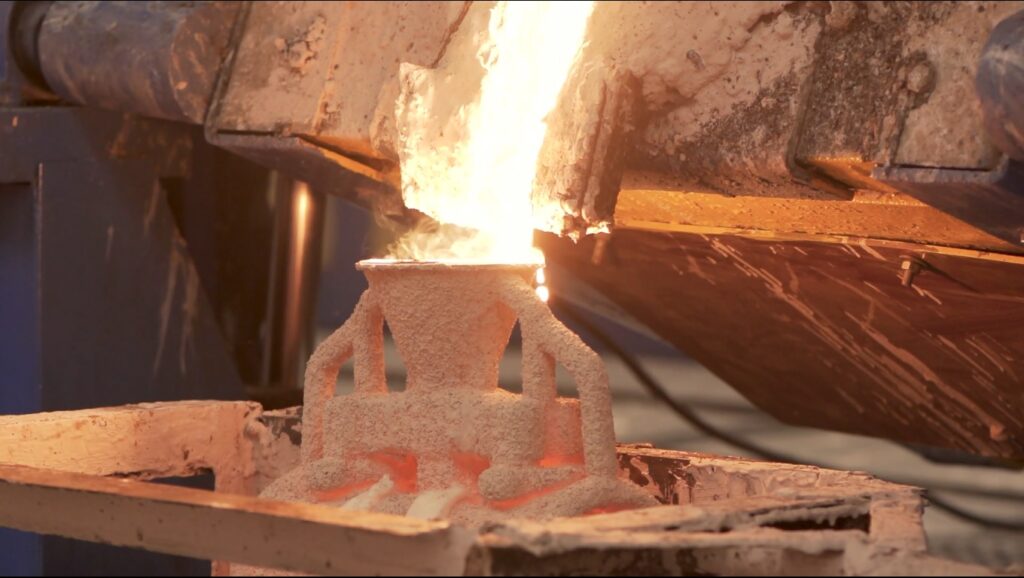
Table of Contents
“Every block of stone has a statue inside it, and it is the task of the sculptor to discover it.” – Michelangelo. This insightful remark by one of history’s greatest artists echoes profoundly in the realms of lost wax casting and forging, where the transformation of raw metal into intricate designs and robust structures is akin to the sculptor’s art. Both lost wax casting, an ancient art form, and forging, a method as old as metallurgy itself, stand as pillars of metalworking, each with its unique capabilities and applications.
In this exploration, we delve into the ultimate comparison between these two time-honoured manufacturing processes. Lost wax casting, known for its exquisite precision and versatility, allows for the creation of complex and detailed shapes by pouring molten metal into a wax-formed mould. Forging, on the other hand, involves the shaping of metal through compressive forces, renowned for imparting unparalleled strength and durability to the material. Each technique, steeped in history and refined through the ages, offers distinctive benefits and challenges.
The choice between lost wax casting and forging is not merely a technical decision but a strategic one, profoundly impacting the quality, efficiency, and cost-effectiveness of the final product. This comparison aims to illuminate the intricacies of each method, providing insight into their respective applications and suitability for various industrial needs. By examining the nuanced differences and unique strengths of lost wax casting and forging, we seek to guide craftsmen, engineers, and industry professionals in making informed decisions that align with their project’s specific requirements.
Overview of Lost Wax Casting
Lost wax casting, also known as investment casting, is a method steeped in antiquity, yet it remains pivotal in modern manufacturing due to its unparalleled precision and versatility. This process begins with the creation of a replica of the desired part in wax, which is then encased in a refractory material to form a mould. Once the wax is melted and removed, molten metal is poured into the cavity, resulting in a highly detailed metal part upon solidification and mould removal.
The materials typically utilised in lost wax casting are diverse, ranging from various metals such as bronze, aluminium, steel, and precious metals. This versatility in material selection makes it an attractive choice for industries requiring meticulous detail and specific material properties. Notably, the aeronautical, automotive, and jewellery sectors frequently employ lost wax casting to produce complex parts that would be challenging, if not impossible, to achieve through other manufacturing methods.
One of the most compelling advantages of lost wax casting is its exceptional ability to replicate intricate details and complex geometries. This capability is particularly beneficial for producing small to medium-sized parts with elaborate designs, such as turbine blades, intricate jewellery, and components with internal passageways. Furthermore, the process’s accuracy ensures a high-quality surface finish, reducing the need for additional machining and finishing work.
However, despite its numerous benefits, lost wax casting process can be more time-consuming and expensive compared to other methods, particularly for large-scale production. The process of mould creation and the need for individual wax patterns make it less economical for high-volume manufacturing. Nevertheless, for applications where detail, accuracy, and material versatility are paramount, lost wax casting remains an unrivalled technique.

Overview of Forging
Forging, an age-old art of shaping metal, stands as one of the most fundamental and powerful metal manufacturing techniques. This process involves the deformation of metal into a predetermined shape using compressive forces, typically executed with a hammer or die. Forging is revered not only for its historical significance but also for its continued relevance in modern manufacturing.
The materials commonly employed in forging are diverse, encompassing a range of metals such as steel, aluminium, and titanium. The choice of material largely depends on the required properties of the finished product, such as strength, ductility, and resistance to wear and fatigue. Forging is widely used across various sectors, including the automotive, aerospace, and construction industries. Its application is particularly prominent in the production of components that demand high strength and structural integrity, such as crankshafts, gears, and structural beams.
The primary advantage of forging lies in the remarkable strength and durability it imparts to metal. The process of deformation under high pressure alters the metal’s grain structure, aligning it with the part’s shape. This alignment enhances the material’s mechanical properties, making forged parts superior in terms of strength and resistance to impact and fatigue compared to those produced by other manufacturing methods. Additionally, forging can produce parts that are generally tougher and more reliable, making it an ideal choice for critical applications where failure is not an option.
Despite these advantages, forging also has its limitations. The process is less suited for producing complex shapes or parts with intricate details. The requirement for high-force equipment and dies can also make forging a less cost-effective choice for small or detailed components. Furthermore, the need for subsequent machining to achieve precise dimensions and finishes can add to the overall production cost and time.
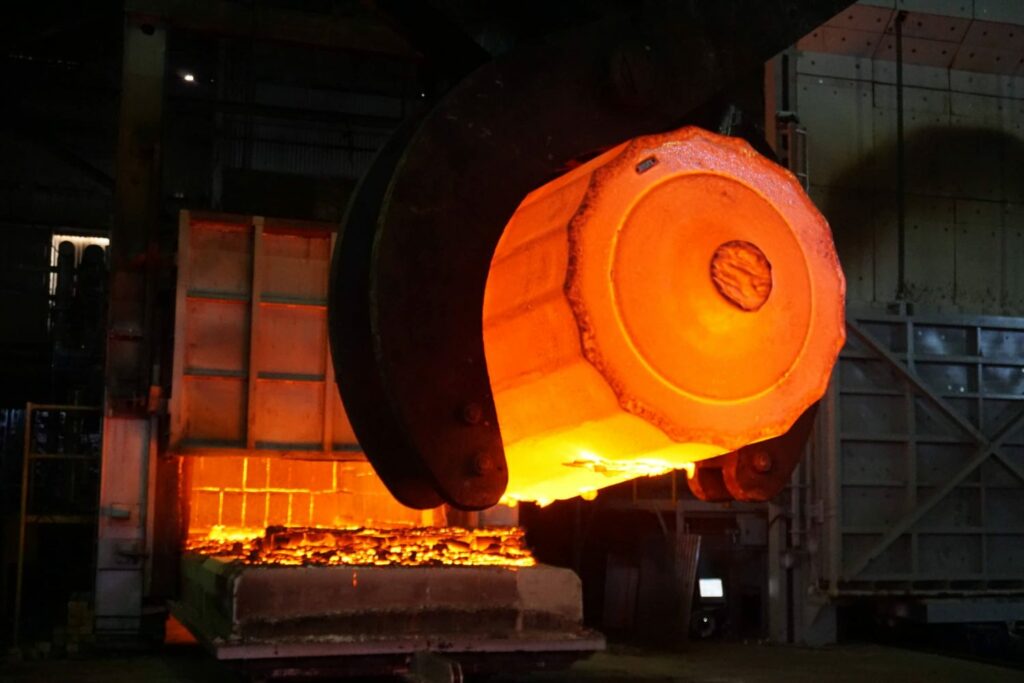
Comparing Quality and Precision
In manufacturing, the pursuit of quality and precision remains top priority. Lost wax casting and forging, while both techniques esteemed for their unique benefits, exhibit distinct characteristics in terms of the quality and precision they impart to the final product.
Lost wax casting is renowned for its extraordinary precision and ability to replicate intricate details. This method is capable of producing components with complex geometries and fine features that are often unattainable through other manufacturing processes. The accuracy of lost wax casting is such that it can faithfully reproduce the designer’s intent, down to the smallest detail. This precision results in a high-quality surface finish, reducing the need for additional machining or finishing. Consequently, lost wax casting is often the method of choice for components where aesthetic detail and exact dimensions are crucial, such as in artistic sculptures, precision instruments, and complex aerospace components.
On the other hand, forging is characterised by its ability to enhance the inherent quality of metal. While it may not match the precision detailing of lost wax casting, forging excels in producing parts with exceptional strength and structural integrity. The process of deforming metal under high pressure refines its grain structure, resulting in improved mechanical properties. Forged parts are therefore highly valued for their durability, resistance to fatigue and impact, and overall robustness. This quality of forging makes it indispensable for components that must endure extreme conditions and loads, such as in heavy machinery, automotive undercarriages, and large-scale structural applications.
The choice between lost wax casting and forging thus depends on the specific requirements of the project. For instances where precision and intricate detailing are paramount, lost wax casting offers the necessary accuracy and surface finish. In contrast, when the quality of a component is defined by its strength and durability under stress, forging is the more suitable option.
Strength and Durability
The criteria of strength and durability are critical in determining the suitability of a metalworking process for specific applications. In comparing lost wax casting and forging, it is essential to understand how each method influences these attributes in the finished product.
Forging is universally acclaimed for its ability to enhance the strength and durability of metal. The process involves heating and then deforming the metal using compressive forces, which realigns its internal grain structure. This realignment strengthens the material, particularly in terms of impact resistance and fatigue strength. Forged components are therefore inherently robust and able to withstand severe stress and strain. This makes forging an ideal choice for parts that are subject to high mechanical loads or need to maintain structural integrity under demanding conditions, such as engine components, construction equipment, and heavy-duty machinery.
In contrast, lost wax casting, while offering exceptional precision and versatility, does not inherently strengthen the material in the same way as forging. The casting process involves melting and pouring metal into a mould, which solidifies into the desired shape. While the resulting components can be made with a high level of detail and complexity, the process does not alter the metal’s grain structure significantly. Therefore, the strength and durability of cast parts are largely dependent on the chosen material and its inherent properties. Lost wax casting is highly effective for producing intricate parts where dimensional accuracy and surface finish are more critical than extreme mechanical strength, such as in decorative art, complex aerospace components, and specialised machinery parts.
However, it is important to note that advancements in materials science have significantly enhanced the strength and durability of cast materials. High-performance alloys and post-casting heat treatments can substantially improve the mechanical properties of cast components, bridging the gap between casting and forging in certain applications.
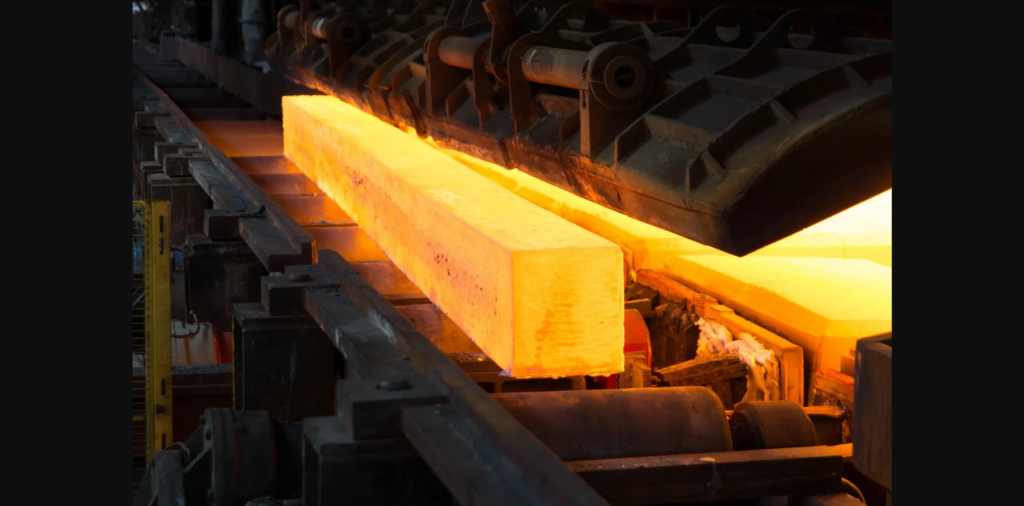
Cost and Production Time
A critical aspect of any manufacturing process is its cost-effectiveness and efficiency, particularly in terms of production time and expenses. In comparing lost wax casting and forging, it becomes clear that each process has distinct cost implications and time requirements, influenced by their respective complexities and the nature of the final product.
Lost wax casting is known for its detailed and intricate process, which, while yielding high precision and quality, tends to be more time-consuming and costly. The creation of a detailed wax model, the construction of a mould, and the actual casting process require significant time and labour investment. Additionally, the materials used in lost wax casting, particularly when dealing with specialised or high-quality metals, can add to the overall cost. This method is often reserved for parts where the complexity and precision outweigh the cost considerations, such as in custom or specialised components, where the volumes are typically lower, and the value of each part is higher.
Forging, on the other hand, is generally more cost-effective for large-scale production. The process, although requiring substantial initial investment in terms of tooling and setup (especially for high-pressure or complex forging), is faster in terms of production time per piece, particularly when mass-producing standardised parts. The durability of forged components can also lead to long-term cost savings, as these parts typically have longer lifespans and require less maintenance. Forging is therefore a preferred method for high-volume, standardised production where the strength and integrity of the parts are paramount, such as in automotive components and industrial machinery.
However, the cost and production time can be influenced by various factors, including the complexity of the part, the type of material used, and the required volume. Advances in technology have also brought improvements in both processes, with automated systems and innovative materials reducing costs and production times.

Design Flexibility and Complexity
The capacity to accommodate complex designs and achieve high levels of design flexibility is a key consideration in the selection of a metalworking process. Lost wax casting and forging, while both versatile, offer different levels of flexibility and complexity in their design capabilities.
Lost wax casting is highly esteemed for its exceptional design flexibility. The process allows for the production of components with intricate shapes and fine details that would be challenging to replicate with other methods. This flexibility is attributed to the ability of the wax to be shaped into complex geometries, coupled with the casting process that can capture these details precisely in metal. Lost wax casting is thus ideally suited for parts with elaborate designs, undercuts, or internal structures, such as in custom jewellery, intricate aerospace components, and detailed artistic sculptures. The method provides designers with a broad scope for creativity, enabling the realisation of complex and nuanced designs.
In contrast, forging, while robust in creating strong and durable parts, is somewhat limited in terms of design complexity. The nature of the forging process – shaping metal through compressive forces – inherently restricts the intricacy of the designs that can be achieved. While modern forging techniques, such as precision forging, have expanded these capabilities somewhat, the method is generally better suited to simpler shapes and bulkier parts. The design limitations of forging are particularly evident when it comes to internal cavities or intricate surface details, which are difficult to achieve through this process. Forging is, therefore, more commonly employed for parts where structural strength and simplicity of design are prioritised, such as in automotive components, construction equipment, and industrial machinery.
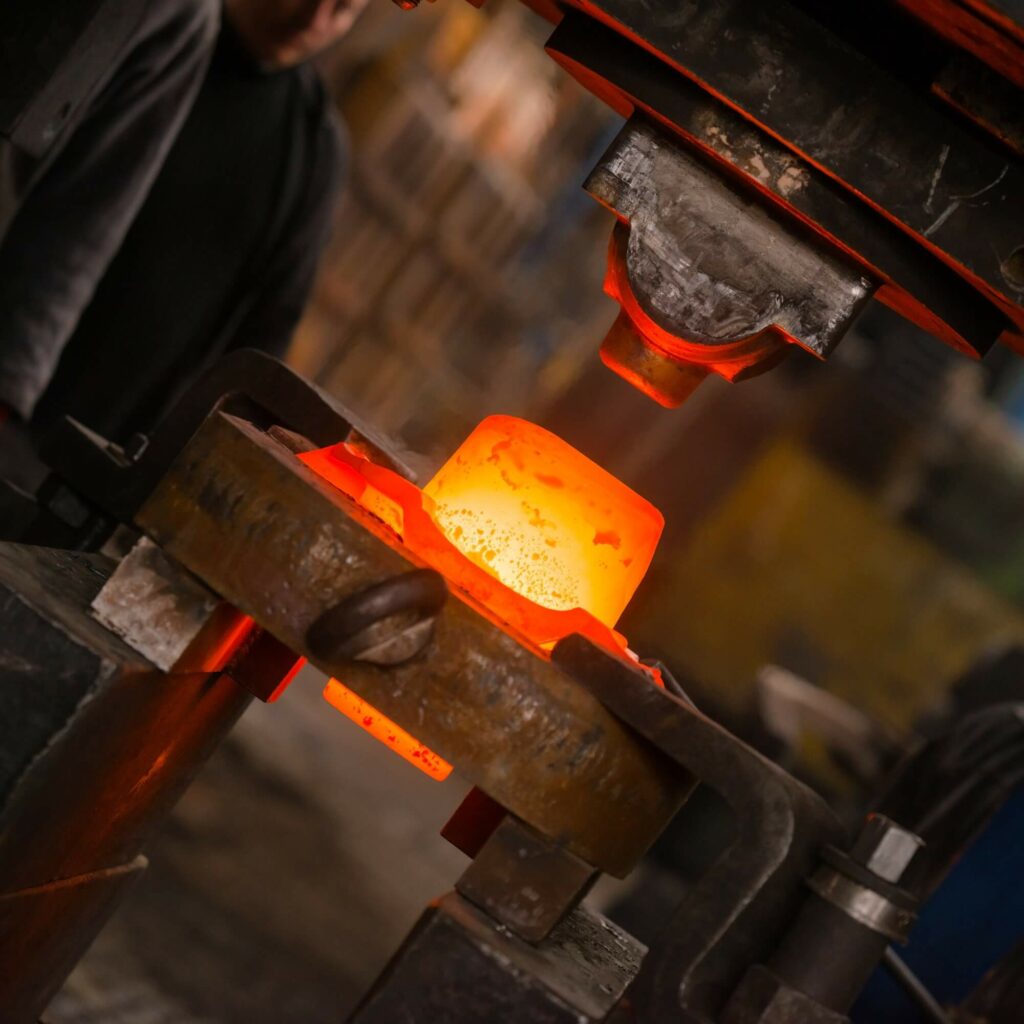
Conclusion
In the intricate tapestry of metalworking, lost wax casting and forging emerge as distinct yet equally vital threads, each contributing unique strengths to the fabric of manufacturing. Our exploration has illuminated the nuances of these methods, revealing the precision and complexity achievable with lost wax casting, and the strength and durability inherent in forging. The choice between these two processes hinges on a myriad of factors, including design requirements, production volume, cost considerations, and the intended application of the final product.
In the realm of lost wax casting, Taiyuan Simis Investment Casting Co., Ltd. stands as a paragon of excellence. With its advanced technological capabilities and a deep commitment to quality, Taiyuan Simis exemplifies the pinnacle of precision casting. The company’s expertise in producing intricate and detailed components is a testament to the versatility and sophistication that lost wax casting offers.
Conversely, in the domain of forging, Shanxi KSN Precision Forging Technology Development Co., Ltd., a branch of Simis, represents the epitome of strength and efficiency. Specialising in high-quality forging processes, Shanxi KSN Precision Forging harnesses the power of modern technology and innovation to produce robust and reliable components. Their expertise underscores the advantages of forging in creating parts that are not only structurally sound but also economically viable, especially in large-scale productions.
As we draw this comparison to a close, it is evident that both Taiyuan Simis Investment Casting Co., Ltd. and Shanxi KSN Precision Forging Technology Development Co., Ltd. embody the respective strengths of lost wax casting and forging. Whether it is the delicate artistry of casting or the robust efficiency of forging, these companies demonstrate the exceptional capabilities of these time-honoured techniques.
Ultimately, the decision between lost wax casting and forging should be informed by a comprehensive understanding of each process’s strengths and limitations. As we have seen, both methods have their unique place in the manufacturing world, each suited to different but equally important roles. The ongoing advancements and innovations in both fields promise to further enhance their contributions to the ever-evolving demands of modern industry.

